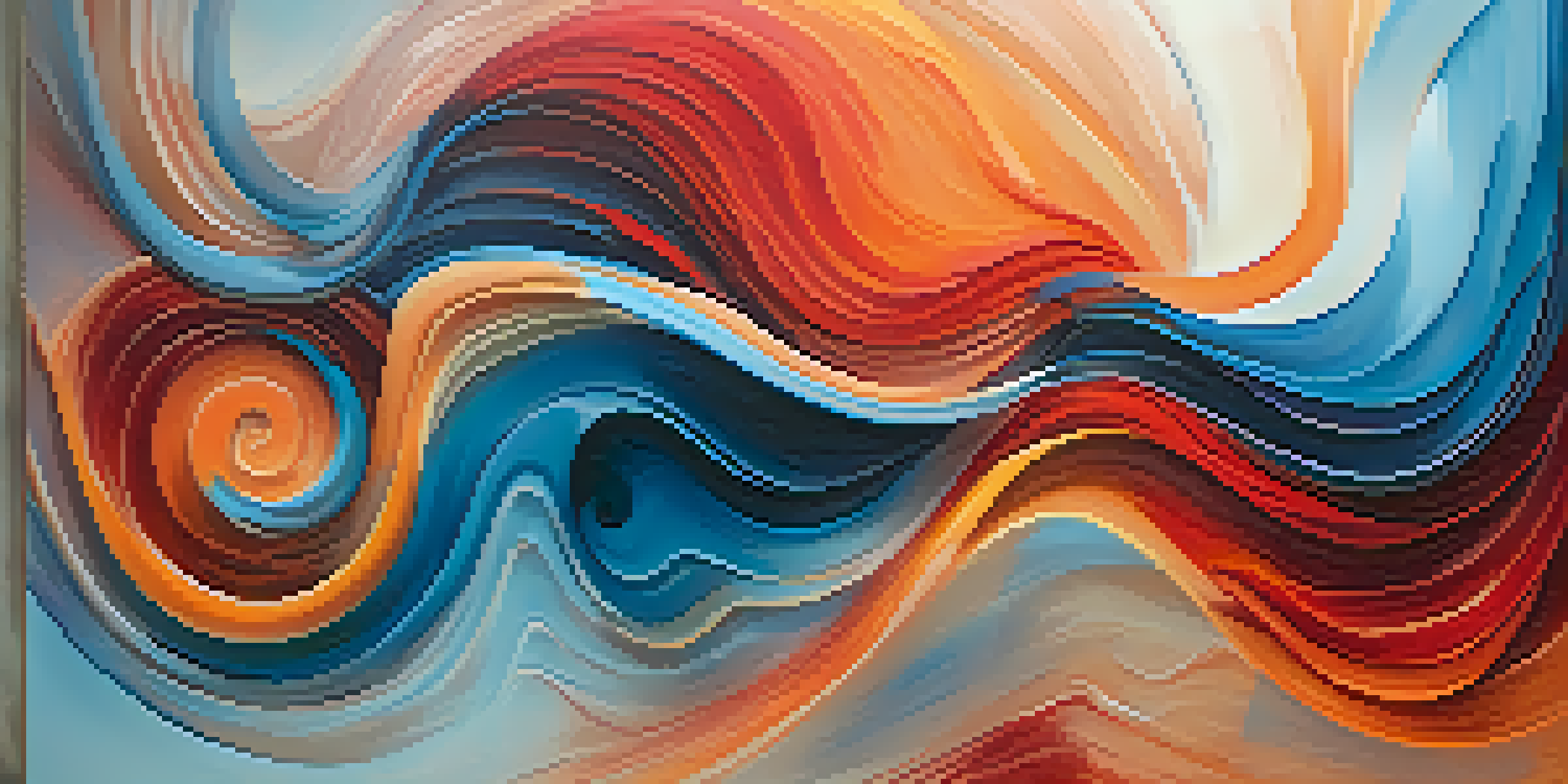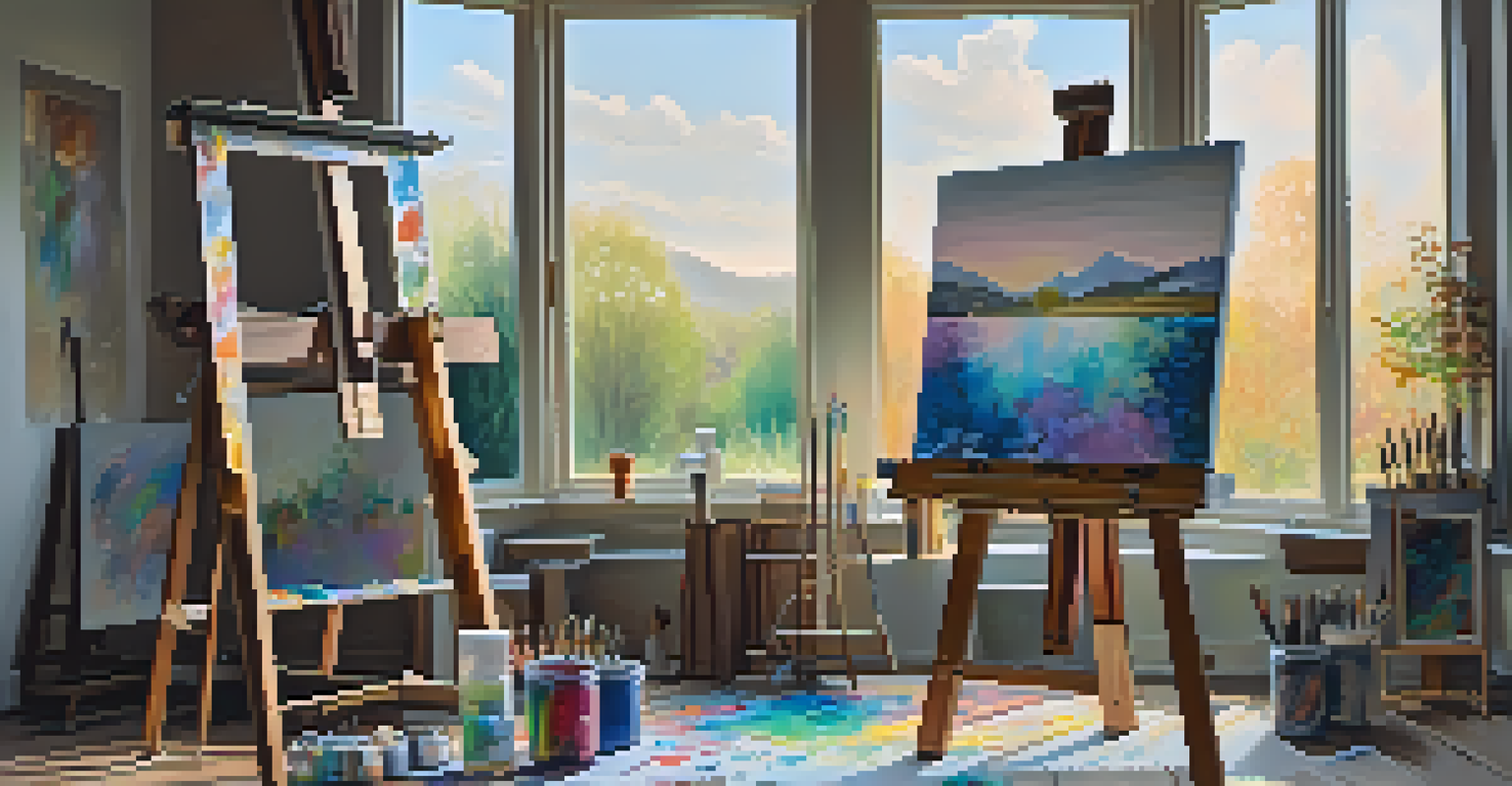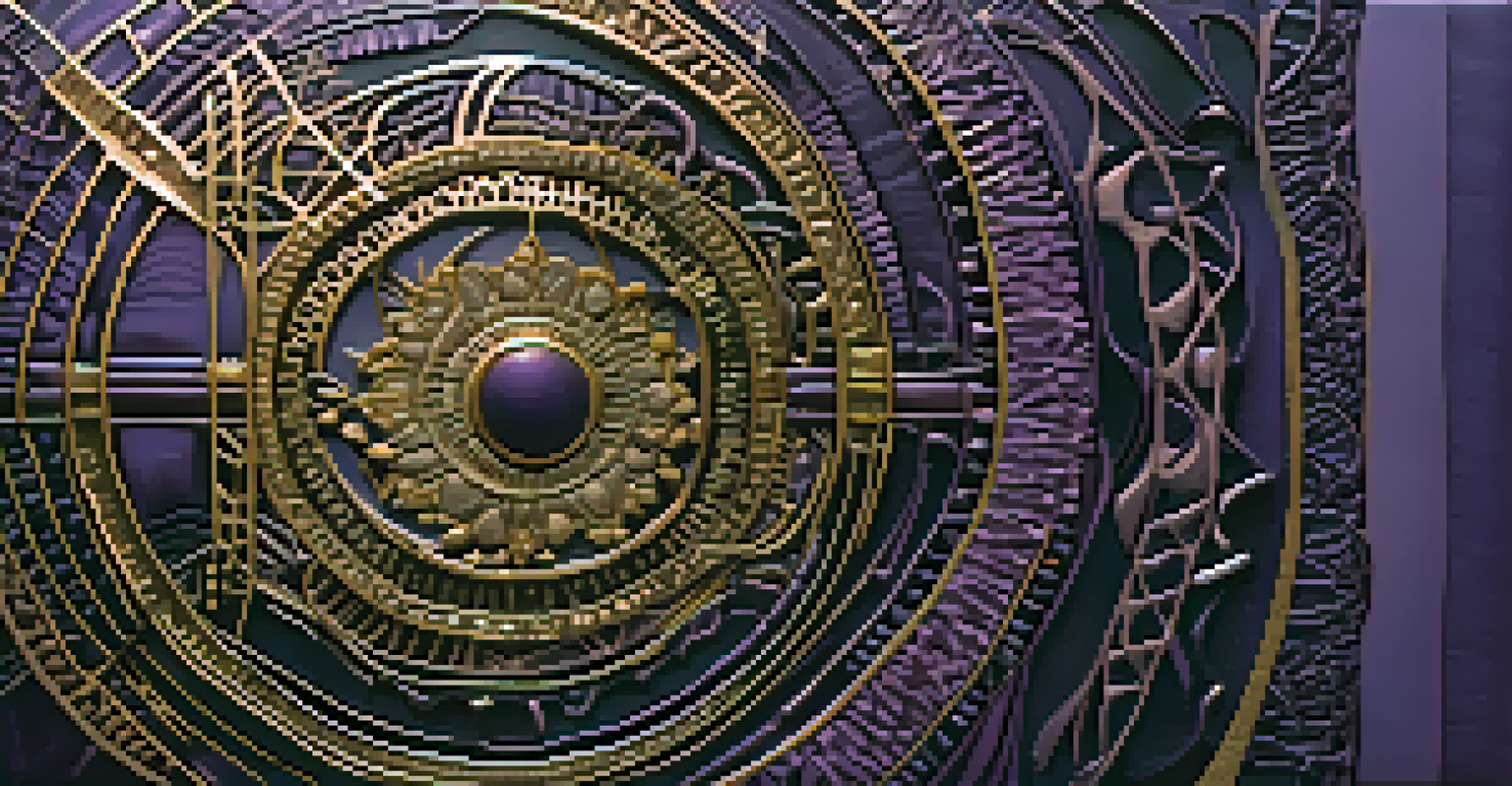Dreams and Abstract Painting: Telling Stories Through Colors

Understanding the Connection Between Dreams and Art
Dreams have long been a source of inspiration for artists, weaving complex narratives that challenge our understanding of reality. They often serve as a doorway into the subconscious, presenting vivid images and emotions that can be translated onto canvas. Abstract painting, with its emphasis on form and color, is particularly suited to express the ethereal quality of dreams.
Dreams are the touchstones of our character.
When artists tap into their dreams, they bring forth an array of colors and shapes that resonate with their personal experiences. This process is akin to translating a language that only they can understand, creating a unique visual language. Just as dreams can be fragmented and nonsensical, abstract art captures that sense of unpredictability, inviting viewers to interpret each piece in their own way.
Ultimately, both dreams and abstract art challenge the viewer to look beyond the surface and explore deeper meanings. By embracing the unknown and the surreal, artists can create works that provoke thought and evoke emotion, making the connection between the two even more profound.
The Role of Color in Dream Interpretation
Color plays a crucial role in both dreams and abstract painting, often serving as a conduit for emotion and meaning. For instance, warm colors like reds and oranges can evoke feelings of passion or anger, while cooler tones like blues and greens may instill calmness or sadness. Artists often harness these color associations to convey the emotions tied to their dream experiences.

When an artist selects colors for their abstract piece, they are not just choosing aesthetically pleasing combinations; they are also tapping into the emotional resonance of those colors. This is similar to how we might feel a certain way after waking up from a dream filled with vibrant hues. The colors used in the artwork can intensify the storytelling aspect, inviting viewers to connect with the piece on a personal level.
Dreams Inspire Unique Art Creations
Artists translate their dreams into abstract art, creating a unique visual language that reflects their subconscious experiences.
By understanding the psychology behind color in both dreams and art, we gain deeper insights into the narratives being communicated. Each hue can transform a simple image into a story that speaks to the viewer's own experiences, making the connection between dreams and abstract painting even more compelling.
Symbolism: Decoding Visual Language in Abstract Art
Much like dreams, abstract art is rich in symbolism, inviting interpretations that can vary widely among viewers. Artists often incorporate shapes, patterns, and colors that hold personal significance, creating a visual language that tells their unique story. This symbolic representation allows the artist to communicate complex ideas without relying on literal imagery.
Art is the most beautiful of all lies; it is a lie that tells the truth.
For example, a spiraling shape in an abstract painting might represent a journey or transformation, mirroring the winding paths our dreams often take. Understanding these symbols can enhance our appreciation of the artwork, revealing layers of meaning that might otherwise go unnoticed. This interplay between art and viewer interpretation is reminiscent of dream analysis, where personal associations can unlock deeper understanding.
In essence, the symbolism in abstract painting acts as a bridge between the artist's subconscious and the viewer's interpretation, creating a shared space for exploration. This dynamic relationship emphasizes that while the artist may be telling their story, viewers are invited to engage and find their own narratives within the colors and forms presented.
Personal Experiences: Artists Sharing Their Dream Journeys
Many artists draw directly from their own dream experiences, creating works that reflect their inner thoughts and feelings. By sharing these personal journeys through their art, they invite audiences to connect with their narratives on a more intimate level. This authenticity often resonates strongly, as viewers can find echoes of their own dreams and emotions within the artwork.
For instance, an artist might create a series of abstract paintings inspired by recurring dreams, using color and form to convey the emotions tied to those experiences. These pieces not only showcase the artist's unique perspective but also encourage viewers to reflect on their own dream lives. In this way, art becomes a shared exploration of the subconscious, bridging the gap between individual experiences.
Color Evokes Emotion in Art and Dreams
The use of color in both dreams and abstract paintings can convey deep emotional connections, enhancing the storytelling aspect of the artwork.
Ultimately, the act of sharing dream-inspired art fosters a sense of community and understanding among viewers. It reminds us that while our dreams may be deeply personal, they are also universal in their exploration of human emotion and experience, creating a dialogue that transcends individual stories.
The Impact of Dreams on Creative Process
The creative process for many artists is heavily influenced by their dreams, often serving as a wellspring of inspiration. Dreams can spark ideas that lead to innovative approaches in their work, pushing them to experiment with color, form, and technique. This influence highlights the importance of tapping into one's subconscious to fuel artistic expression.
For instance, an artist may wake up with a vivid image from a dream, prompting them to explore that imagery in their next painting. This spontaneous burst of creativity can lead to works that are both original and deeply personal. By remaining open to the messages from their dreams, artists can cultivate a rich source of inspiration that informs their overall practice.
Moreover, engaging with dreams as a part of the creative process invites a sense of playfulness and exploration. It encourages artists to let go of conventional expectations and embrace the unpredictable nature of their subconscious, resulting in artwork that is truly reflective of their inner worlds.
Dreams and Abstract Art: A Therapeutic Connection
The intersection of dreams and abstract painting can also serve as a therapeutic outlet for many individuals. Creating art inspired by dreams allows artists to process emotions, fears, or desires that may surface during sleep. This cathartic experience not only facilitates self-discovery but also provides a sense of relief and understanding.
For some, translating dream imagery into art can be a way to confront unresolved issues or traumas. The act of painting becomes a form of visual therapy, allowing individuals to externalize their experiences and emotions. As they explore their dreams through color and form, they gain insights that can lead to personal growth and healing.
Art as a Therapeutic Outlet
Creating art inspired by dreams serves as a therapeutic process, helping artists and viewers alike to process emotions and foster personal growth.
This therapeutic connection extends beyond the artists themselves, as viewers can also find solace in the stories told through abstract art. By engaging with these pieces, audiences may recognize their own emotional journeys, creating a shared experience that highlights the power of art as a medium for healing and connection.
Conclusion: The Lasting Influence of Dreams on Art
In conclusion, the relationship between dreams and abstract painting is a rich tapestry of emotions, colors, and stories waiting to be explored. From the impact of color in dream interpretation to the symbolism embedded in abstract forms, this connection opens up endless possibilities for artistic expression. As artists continue to draw inspiration from their dreams, they invite us to join them on a journey of discovery and self-reflection.
By understanding how dreams influence the creative process, we can appreciate the depth and complexity of abstract art. Each piece serves as a unique narrative, allowing viewers to engage with their own experiences and emotions. Through this shared exploration, we come to realize that while dreams may be fleeting, their impact on art is profound and lasting.

Ultimately, the interplay between dreams and abstract painting enriches our understanding of both art and the human experience. As we continue to uncover the stories told through colors, we are reminded of the beauty and complexity of our own dreams, encouraging us to embrace the narratives they hold.